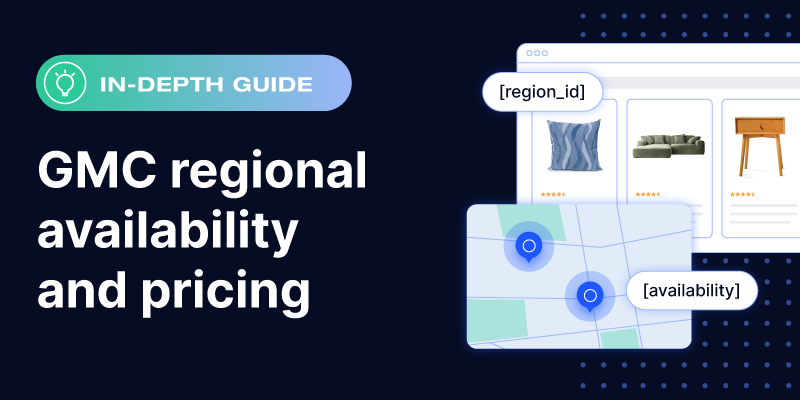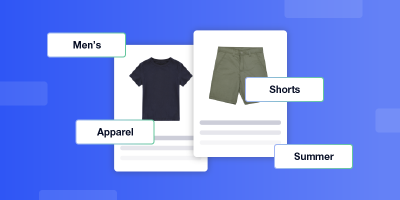When you advertise on Google Shopping, Google expects a product’s pricing and availability to be the same no matter where your customers are located within the country of sale. This holds true even if you’re only running advertisements in specific cities or states.
This poses a problem for online retailers that have limitations on where a product can be shipped, or need to vary their product prices based on the region or store they ship from.
The solution? Using the regional availability and pricing (RAAP) feature in your Google Merchant Center (GMC) product feed. With this feature, you can vary product availability and pricing based on your business presence and the location of your customers. RAAP also enables businesses to use unique fulfillment models.
As of November 2023, the feature is officially available in the United States, France, Australia, Brazil and Russia, with beta tests in 26 countries, including Canada, Germany, and Spain.
Snapchat and Meta also have their own version of feed-based RAAP features for merchants.
What is the regional availability and pricing feature in Google Merchant Center?
Regional availability in Google Merchant Center refers to where your products are available for purchase or delivery. This is defined using the [region_id] attribute in conjunction with the [availability] attribute.
Regional pricing, on the other hand, involves pricing your products for different regions. This feature is useful for adapting your prices to accommodate variations in local market conditions, or meeting pricing requirements from a business standpoint or regional limitation.
What’s the difference between regional availability and pricing and local inventory ads?
Local inventory ads (LIAs), which focus on driving customers to brick-and-mortar storefronts, are limited to shoppers within a certain store’s distance as defined by Google’s ad program.
RAAP, on the other hand, is more delivery-focused and intended for scenarios where different delivery hubs—stores or warehouses, for example—have different product availability and/or pricing. The advertiser chooses where an ad shows by specifying the applicable zip codes for a product.
The two are often used in conjunction with each other to effectively manage multi-regional commerce.
Who benefits from using regional availability and pricing?
There are a wide variety of use cases for the regional availability and pricing feature. Any retailer that needs to establish regional pricing, sales pricing, and availability rules will find it useful.
Here are some examples of businesses that might need to implement RAAP into their product feeds:
- Furniture resellers who can only ship some products to a limited area
- Grocers offering local delivery from stores without complete country coverage
- Bakeries offering delivery within a single state
- Grocers offering the same products for local delivery with varying prices per store/region
- Food and grocery delivery services that need to be selective about which products to advertise among thousands of duplicate regional listings
- Heavy-appliance manufacturers with less-than-truckload (LTL) freight that can only be delivered a limited distance from a regional warehouse
- Delivery services that mark up the price of products sold through their app or site based on where they advertise
What are some strategic uses of regional availability and pricing for businesses?
Aside from using RAAP to account for regional delivery and pricing limitations, retailers can use the feature to enhance their ad campaigns, gain a competitive edge in regional markets, and enrich their omnichannel strategy.
Decrease CPC associated with ineligible customers
Use RAAP to show your products to audiences that are able to receive them.
According to Google, your products are shown to users in the custom regions you define, which means you only pay for “valid” clicks from Google Shopping ads.
Expand the meaning of “local”
If you use LIAs, RAAP can help you expand your reach to areas beyond the radius of your stores.
“If you have brick-and-mortar stores, then leveraging RAAP along with LIAs can be a very successful way to go, because if I want to find a ‘gray sectional near me,’ I can now see a storefront that I can actually go into, look at it, and sit on it. But you’re also making sure I can see an item that I can purchase online even if I’m not that close to the store.”
Localize pricing
Adjusting your product prices based on regional considerations enables you to stay competitive in each market and factor in the regional costs of shipping.
A company with a network of stores has to contend with a vast number of locations selling its products at different prices. RAAP can ensure that a customer in a particular region sees the preferred price in an ad for that region.
How do you set up regional availability and pricing in Google Merchant Center?
To use RAAP, configure the regions in your GMC account and then define where a product is available and what pricing rules it should follow. You must assign a [region_id], which is simply a string of numbers that makes it possible to match varying product details to their respective regions. It also ensures that customers see the correct product page after clicking on an ad.
You can add the optional [price], [sale_price], and [sale_price_effective_date] to your feed to further customize how a product should be priced based on the [region_id] it is linked to.
Complete instructions for setting up RAAP in your product feed are available on the Google Merchant Center help page.
Attributes that can be included in a RAAP feed are shown below:
| Attribute | How it’s used |
|---|---|
| [id] | Unique product identifier |
| [region_id] | Numeric key tied to regions set on the “Regions” page |
| [price] | Sets the regional price for the product when used in the regional feed |
| [sale_price] | Sets a price for regional promotions when used in the regional feed |
| [sale_price_effective_date] | Indicates how long a regional sales price lasts when used in the regional feed |
| [availability] | Signals “in_stock” or “out_of_stock” regional availability |
What’s the best way to manage regional availability and pricing attributes with a large product catalog?
Merchants with large and constantly changing product catalogs may find it too time-consuming to manually add and update regional pricing, availability, and regional IDs in their product feeds. In this case, we suggest using a product feed management platform to set feed rules that automate the process and reduce errors.
Our full-service feed management solutions simplify RAAP in multiple ways:
Data synching
Keep your inventory and availability accurate, organized, and updated across your stores with frequent data synching.
“Because of the scale, volume, and frequency of items potentially going in and out of stock given the more localized aspect to this, that’s something where our ability to quickly pick up any sort of delta updates is crucial.”
Programmatically creating GMC regions and subaccounts
“Depending on the size and what you’re actually trying to accomplish, implementing a successful RAAP program might also necessitate effectively building out a lot of additional complexity in terms of Merchant Center subaccounts and the number of regions, and we can assist with that programmatically.”
Listing deduplication and prioritization
For RAAP, Google Shopping disapproves products that have more than 300 associated stores submitted in a feed. . Feedonomics allows you to set rules that prioritize or limit the stores submitted in a feed.
For example, if two stores in the same region have a can of soda for $3 and $4, you can choose to automatically prioritize the $3 listing on Google Shopping.
“We can create rules to prioritize based on available location, region grouping, or pricing.”
Data governance
Set data governance rules to avoid errors triggered by missing data, unexpected variations in inventory, or other criteria.
“Data governance, when dealing with data of any sort of significant volume like this, is always a crucial piece of the picture. There’s going to be more sensitivity to malformed data coming into play.”
Take the technical burden off of your team with help from our channel experts.

With its leading data feed management platform, Feedonomics helps brands, retailers, and agencies optimize and list products on hundreds of shopping destinations around the world. Learn more about our full-service solutions for advertising channels and marketplaces.





